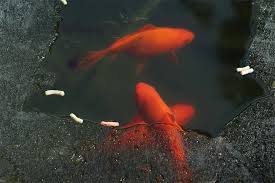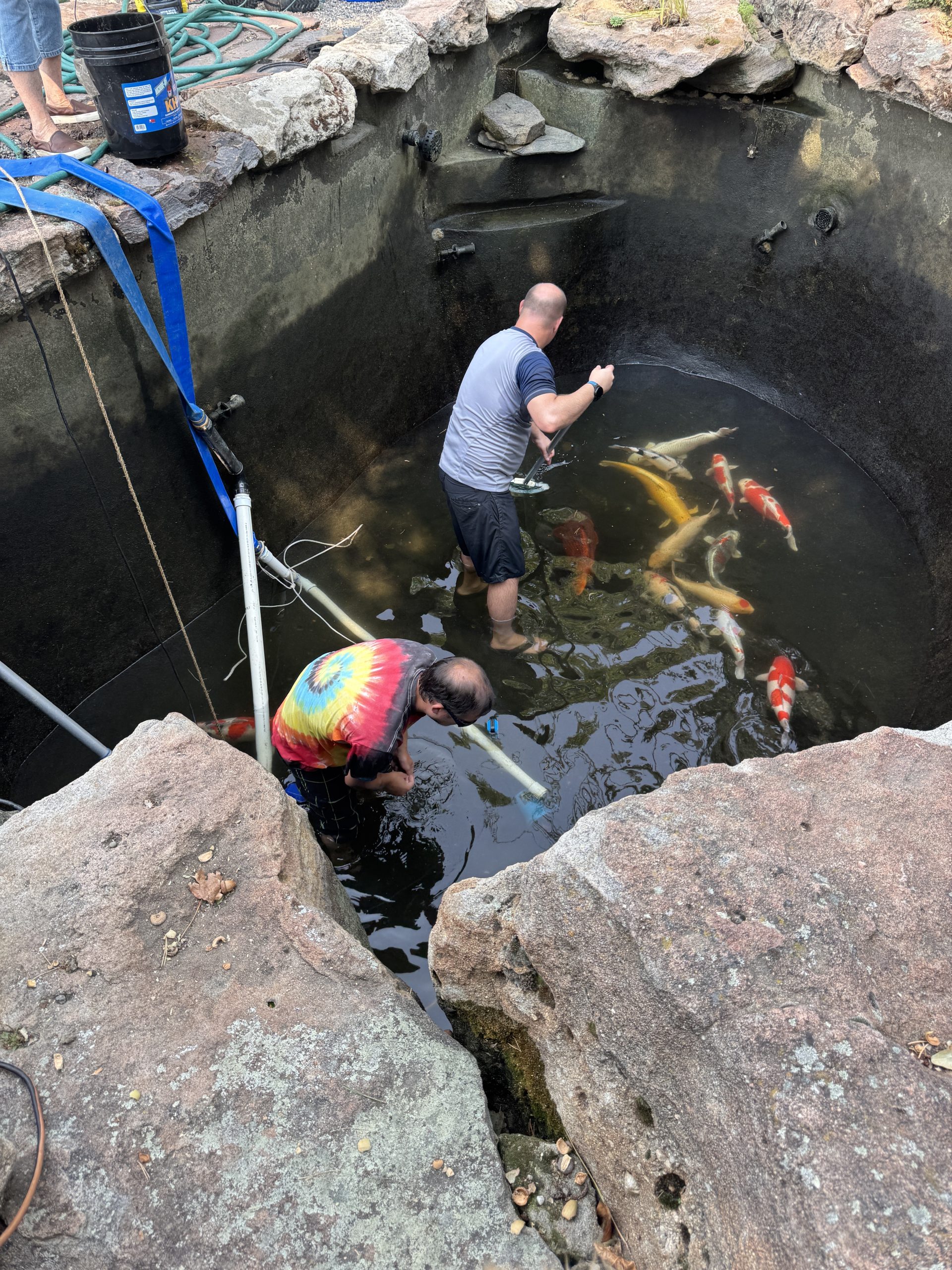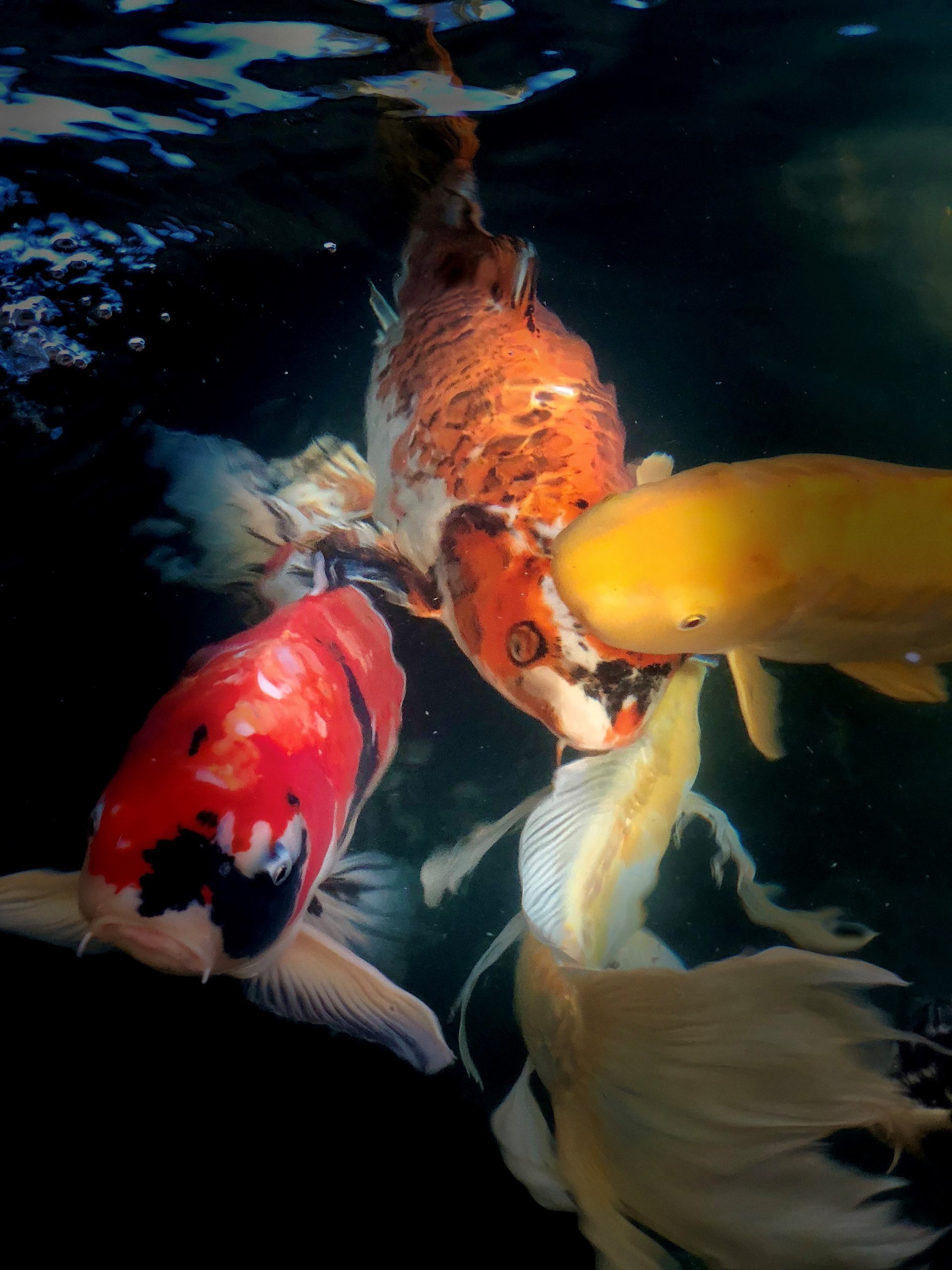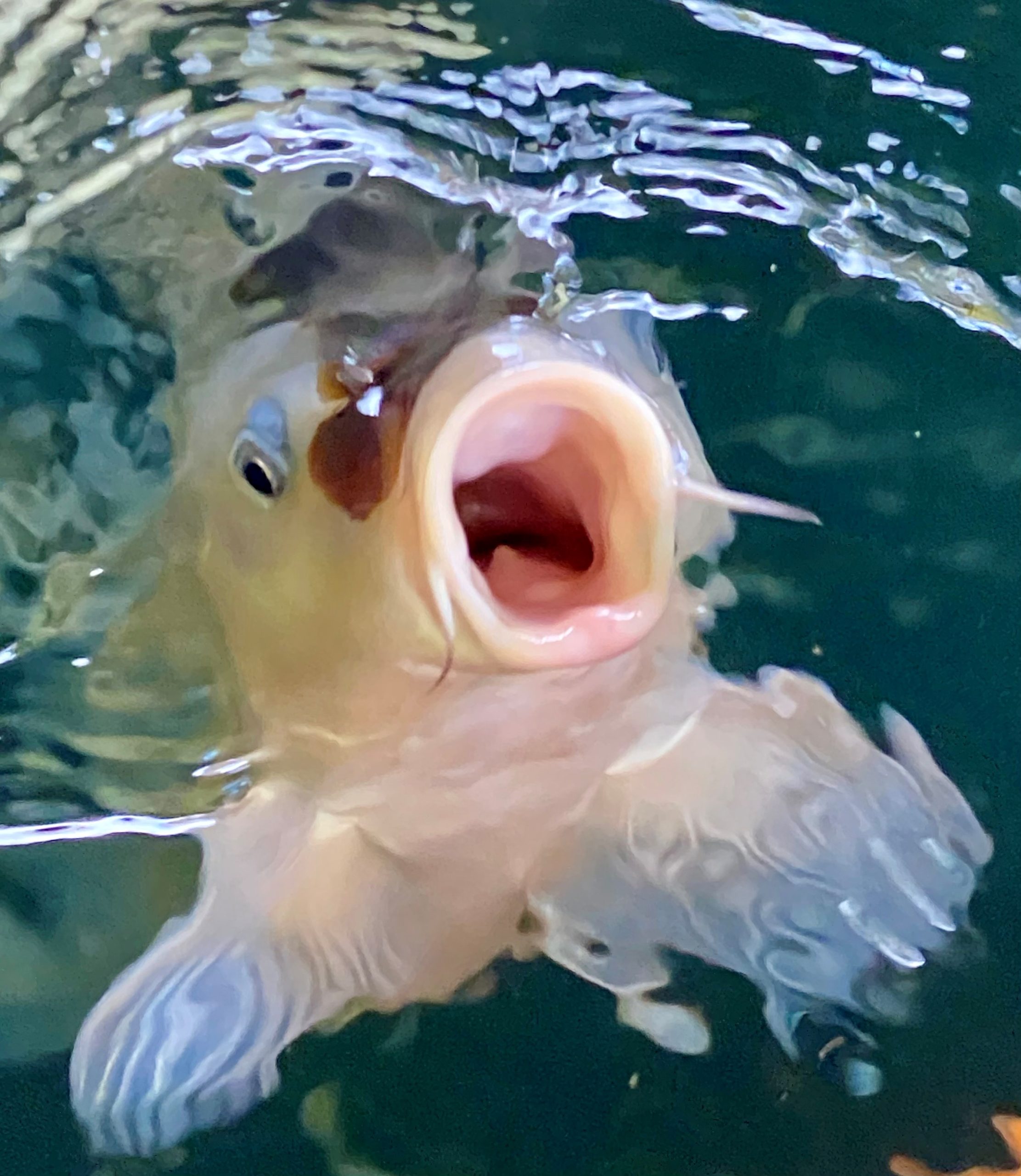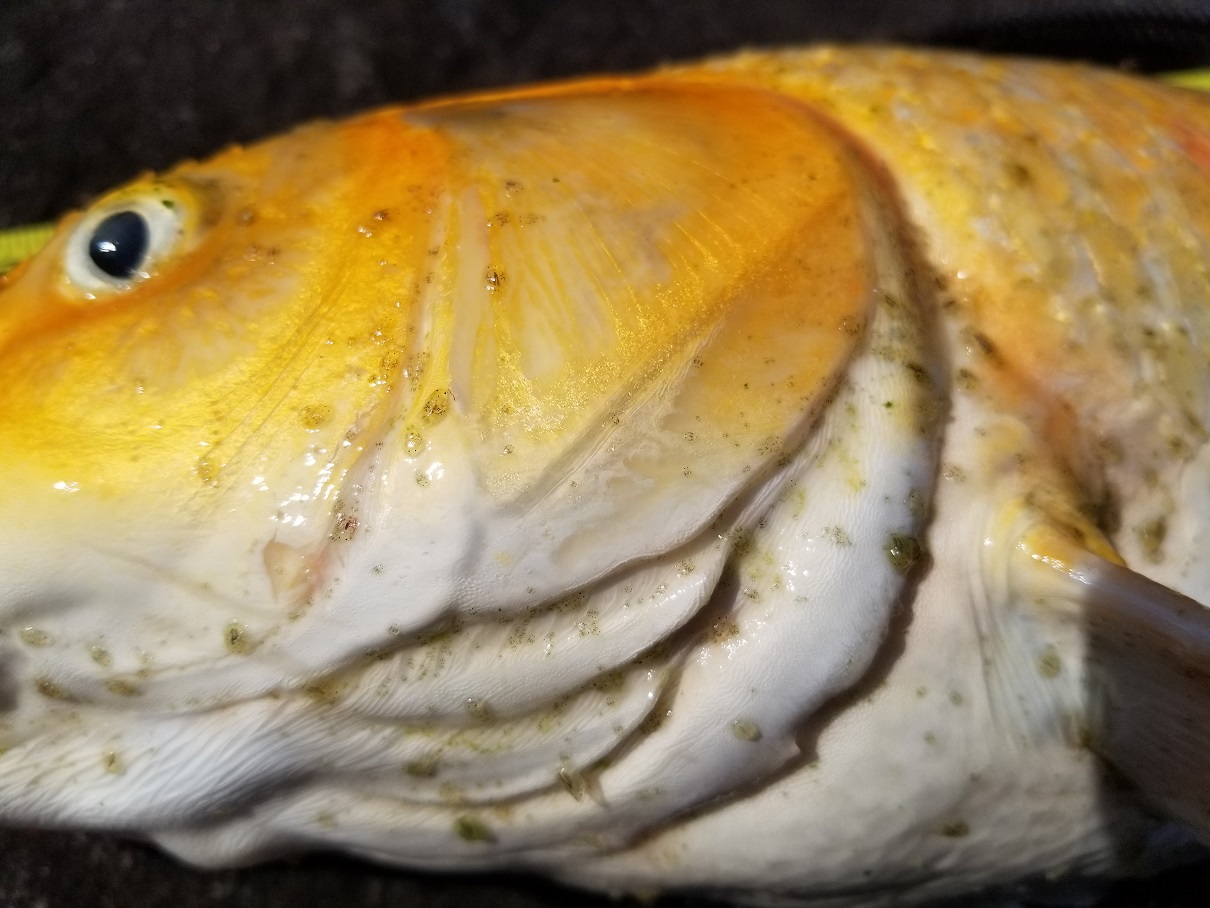If you collect Fancy Goldfish, you probably are able to bring them indoors for the winter. But, Koi are not as easily moved indoors. For one thing, it takes more than an aquarium to keep koi and by the second or third year, they will have outgrown almost everything.
Then, there are all varieties of Pond Deicers, ranging from $37.99 to $2,000+, and from 100W to 230V to keep an opening in the surface when the weather starts to FREEZE outside. It is advised that we use a Pond Deicer to allow “Gas Exchange”. Have you ever used a Pond Deicer? How will you choose this Pond Deicer? Do you want the one that saves on electricity? Do you pick one that has a guard around it, so not to harm your fish? I suppose you want one that will last from year to year, rather than have to replace it. Why do you think you need an opening in the surface of your pond? What could possibly happen to the fish if the pond froze?
Will they die of asphyxiation when they run out of oxygen? If so, we can simply keep aeration going under the ice. Sounds like a great idea! I know many people that only do this. However, I know a fish veterinarian in New York that showed the Koi Club how that works. He took the time to show how using an aerator, centrally located in the pond, acts like the flow in a drink with ice, maybe a cocktail. You can watch the bubbles going up, around the ice cubes, and if you look closely, you can see the water moving down around the sides. Yes! The aerator, centrally located, creates a vertical flow (up/down) movement, carrying the bubbles/oxygen upward. What it also does is to draw water/O2 from the surrounding areas, thereby leaving the fish lying in the outer areas without oxygen. It will be those fish in outer areas, if the frozen surface lasts long enough, that will die before spring. No, an aerator is not the best answer.
Well, there’s the “hat” that saves electricity by using only 100W! It is a lower priced deicer that looks almost like a hat. That sounds excellent. Winter is only a couple of months and we won’t put it into the pond until we expect a hard freeze. Feeling very proud of ourselves, we have our winter plan! What happens, however, is that the “hat” tends to get covered with the first snow, never to be seen again. Being only 100 watts, it doesn’t produce enough heat to free itself. There was no hole in the surface, either.
This brings us to the BIG QUESTION: WHY DO WE NEED GAS EXCHANGE?? What GAS are we exchanging? Everyone answers- OXYGEN!! That’s part of it, but only a small part. In winter, when the water is cold, the fish are not eating (because we are not feeding) and all the living microbes have slowed down considerably. The oxygen is at its highest level. So, there is no real oxygen shortage during winter. Yes, the fish continue to breathe, slowly. They take in oxygen and breathe out carbon dioxide, but even their respiration is not what it is during summer. Since they are not being fed they aren’t adding waste to the pond. Hmmm, but winter winds are notorious for carrying organic waste (leaves, dirt, etc.) and leaving this to buildup in the bottom of your pond, even if your pond is netted. When we shut our ponds for the winter, we turn off the filtration. The winter organic waste is acted upon by the cold-water bacteria, heating up the collection of leaves (something like underwater compost) which produces the BAD GASES (hydrogen sulfide and methane!) …
We’re talking about collected organics that you didn’t even realize are in the pond. We’re talking about lengthy freezes that can result in the death of healthy fish. Instead of GAS EXCHANGE, perhaps we should be calling it GAS RELEASE! And this is the real reason for keeping a “breathing” hole in the surface of your pond. It is not “if”, it is “when” the time comes and you will want to be ready.
Related post: Enhancing Vitality: Unveiling Natural Remedies for Potency

